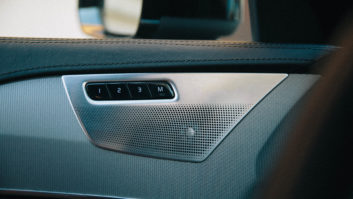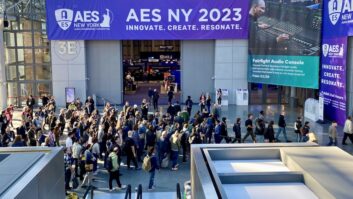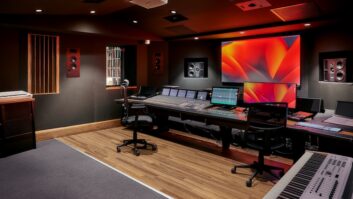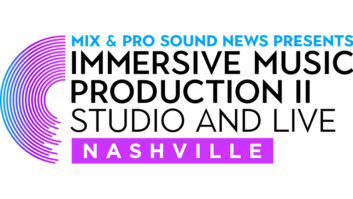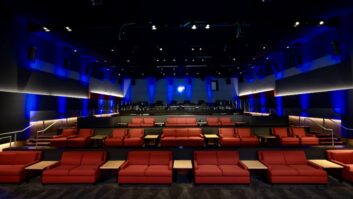This story, sponsored by Dolby, appeared in the July 2018 issue of Mix magazine.
If you are an audio production or post-production business owner thinking about building a new room or upgrading an existing studio, you would do well to consider implementing Dolby Atmos mixing capabilities. Demand for immersive content is growing, with leading distribution services such as iTunes, Netflix and others now delivering movies and TV shows mixed in Dolby Atmos, which means that implementing an object-based immersive audio room will potentially enhance the facility’s earnings potential while still enabling projects to be mixed in 5.1, 7.1 and other formats.
And it may not be as difficult or as expensive as you might imagine.
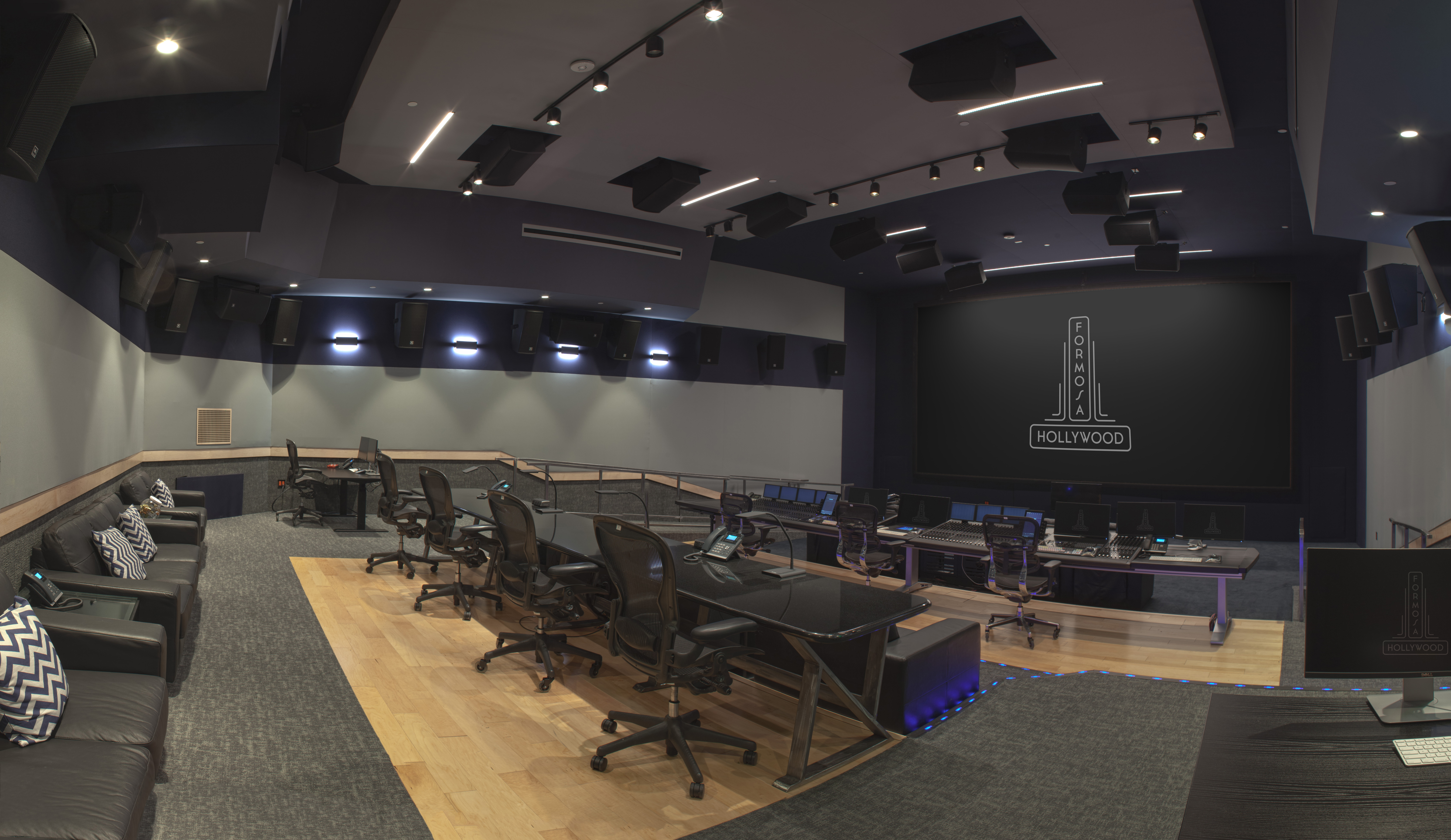
There is already an established audience for Dolby Atmos content, both in the theater and at home. Since the theatrical release of Disney/Pixar’s Brave in June 2012, more than 950 movies have been released with a Dolby Atmos soundtrack by all major Hollywood studios, both in the cinema and home. Blu-ray releases support Atmos, and it is increasingly being implemented for other delivery platforms.
Streaming media service Vudu began making movies with Dolby Atmos soundtracks available to subscribers just over two years ago and has since been joined by the likes of iTunes, Netflix and others. In the world of live entertainment, there have been over 200 live sport and music event broadcasts in Dolby Atmos globally, including the English Premier League available on Sky and BT Sport in the UK.
In short, Dolby Atmos is no gimmick. To the contrary, it is becoming necessary for facilities to remain competitive. Indeed, as a facility owner, you’re going to quickly see your return on investment just by being able to bid on Dolby Atmos projects. As Tom McCarthy, executive vice president of post production services at Sony Pictures Entertainment in Culver City, Calif., comments, “I had a $120,000 post contract for a Netflix series. It required Atmos deliverables. To run my business, and with an eye on the future, it was a no-brainer to convert the TV stages to Atmos.”
Essential Components
When Dolby Laboratories introduced Atmos in 2012, the object-based immersive audio platform was initially available only to major movie studios and well-heeled independent post houses. At the same time, Dolby Labs established a certification program to ensure that facilities met stipulated standards for criteria such as theatrical mixing stage acoustics, equipment selections and installation. Once approved, the studio had access to the core hardware, the Dolby Rendering and Mastering Unit (RMU), which was provided through a licensing agreement with the company.
But outside those large dubbing stages, at facilities producing Dolby Atmos content for television, streaming, Blu-ray, virtual reality and other delivery platforms, the model is very different—not least because the mix environment is generally smaller and the deliverables for those platforms demand a nearfield monitoring setup. For those non-theatrical studios, Dolby introduced the Dolby Atmos Mastering Suite, a hardware and software solution for the mission-critical mastering of Dolby Atmos home entertainment content.
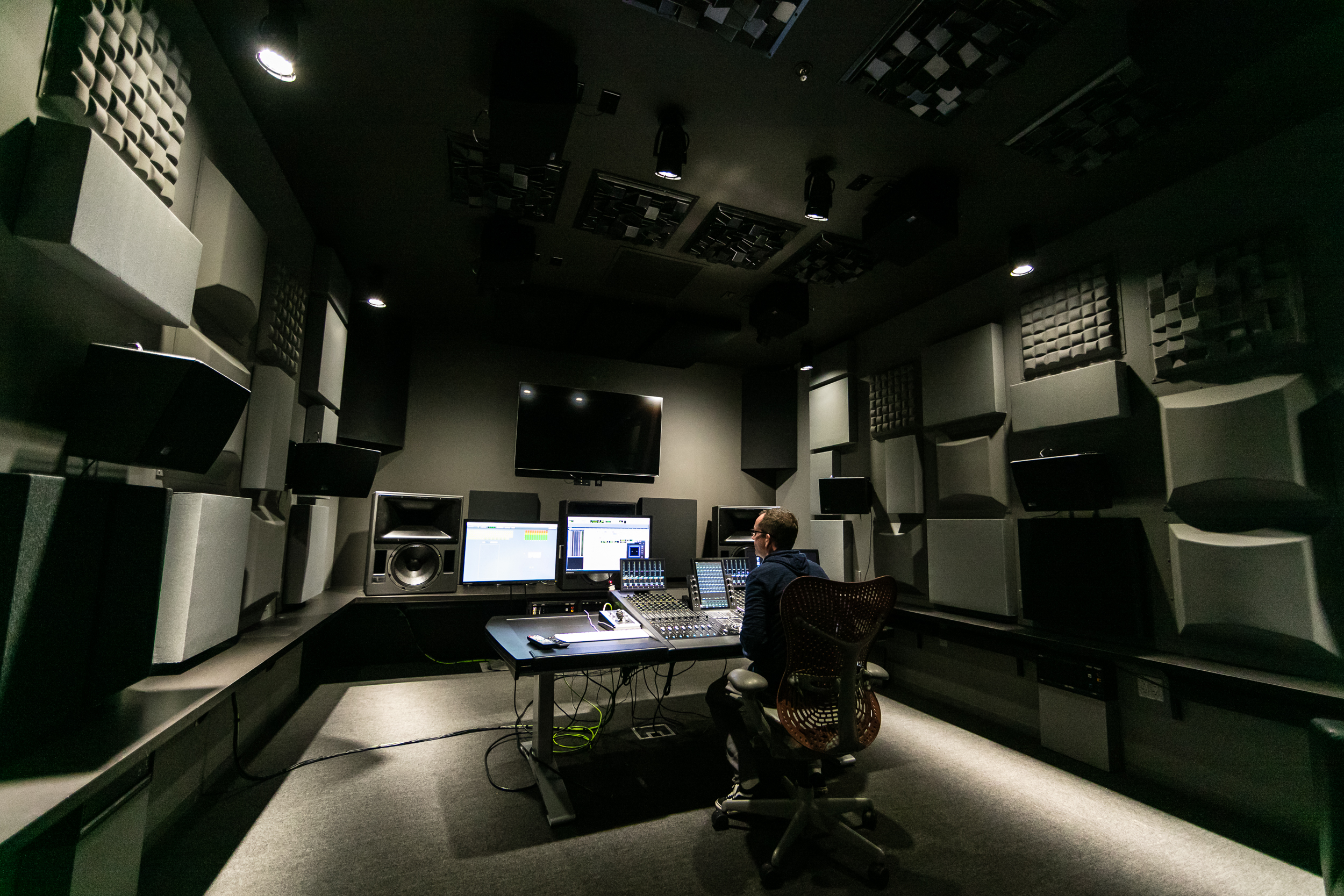
Central to the non-theatrical workflow is the Dolby Atmos Mastering Suite, which includes the Home Theater Renderer software that has been developed to run on a Dell server fitted with MADI cards. This dedicated rendering box sits alongside the studio’s primary workstation or primary console. An upcoming update, previewed at the 2018 NAB Show and scheduled for late July, adds a Mac-based option as well as a Dante card option, enabling the software to run either in Windows with a MADI or Dante interface, or Mac with MADI or Dante I/O.
The Dolby Atmos Mastering Suite is intended specifically for final delivery and QC, but it comes with three licensed copies of the Dolby Atmos Production Suite software. Dolby’s assumption is that a facility’s mix stage is supported by one or more editorial rooms; this software enables editors to monitor Dolby Atmos content in multiple rooms and ensures that the sessions and associated metadata are identical and translate from room to room.
Currently running only on Mac, the Dolby Atmos Production Suite is available from the Avid Marketplace for $300 and is intended as an editorial and premix tool. Sharing much of the functionality of the Dolby Atmos Mastering Suite, it is designed for in-the-box workflows, effectively emulating the hardware renderer but within a single system. Running in Pro Tools, it uses a plug-in to bridge between the DAW and the Dolby Atmos Production Suite.
While Pro Tools is the workstation of choice in Hollywood, Dolby recognizes that there are other preferences and optionally offers integration with Steinberg’s Nuendo DAW. On that platform, a Dolby Audio bridge—basically, a Core Audio bridge—links the workstation I/O with that of the Dolby Atmos Production Suite.
The in-the-box workflow brings with it certain limitations compared to the standalone server in terms of processing and delay compensation. Dolby therefore emphasizes that, while the Dolby Atmos Production Suite is optimized for editorial work, it should not be used for the final mastering workflow in place of the Dolby Atmos Mastering Suite running on separate hardware.
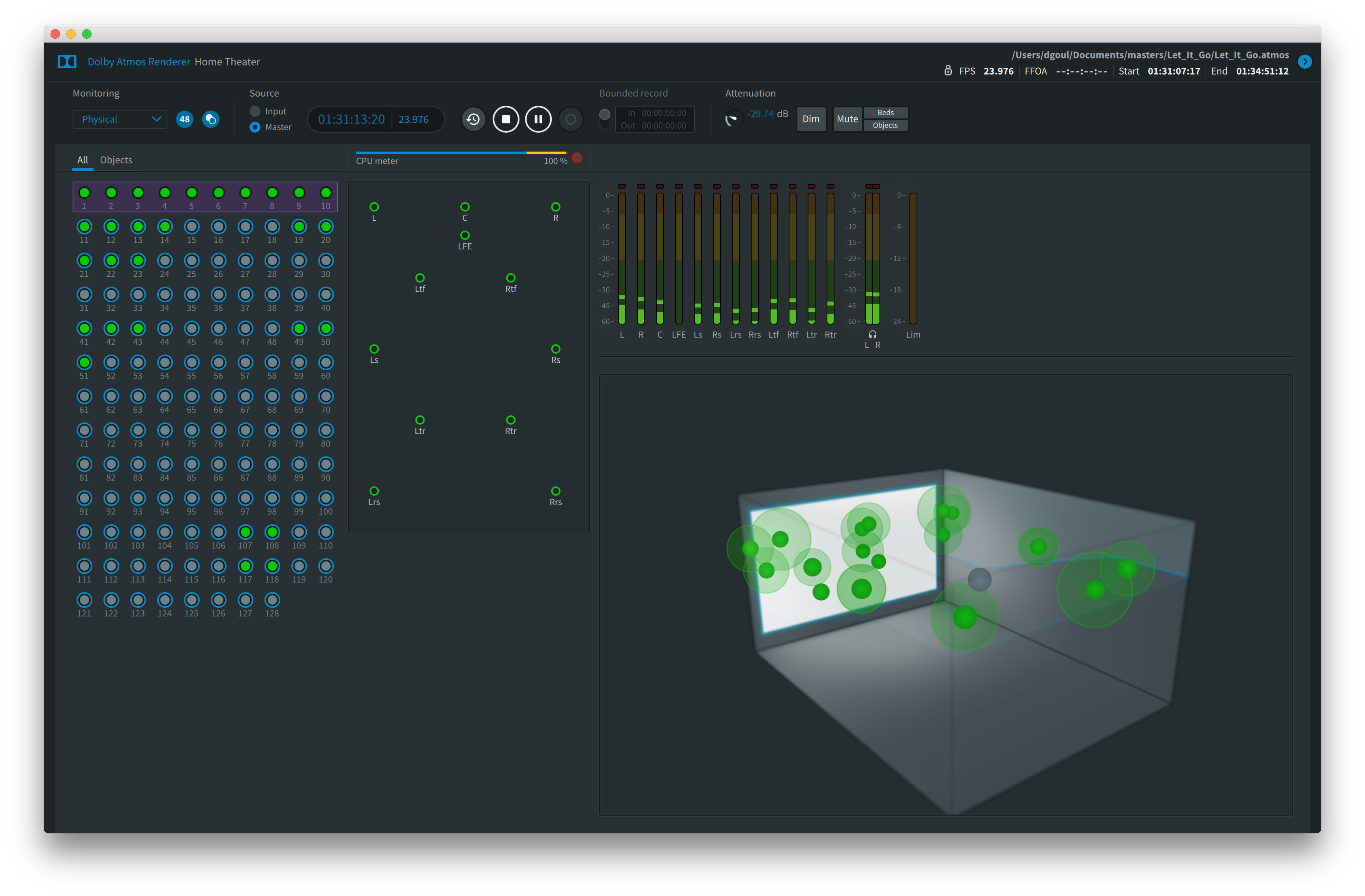
To provide facilities guidance in the design and outfitting of their home theater mixing rooms, Dolby announced that they will release a room certification program. The company is currently consulting with its customers and facilities regarding the parameters, with the goal of launching the program in late 2018.
Certification offers benefits to both content producers and post facilities. On the one hand, some facilities want to be able to show their clients that they have the hallmark of Dolby certification. Similarly, on the services side, content producers seek the reassurance that the facilities with which they are working have been certified by Dolby. Consequently, while this new home theater certification program is being finalized, Dolby is continuing to work with its approved resellers worldwide to ensure that they are armed with the latest information so that rooms are built and outfitted to spec. Where installations are already underway, the company is working with the relevant resellers and customers to provide certification.
Room & Loudspeakers
On paper, upgrading to Dolby Atmos from, say, a current 7.1 room is potentially as easy as adding four overhead speakers, perhaps with associated amplification. Of course, it’s not quite that simple.
One essential difference between theatrical and home entertainment mix stages is size. It’s not unusual for the cavernous mix stages at the major film studio lots to be equipped with 64 loudspeakers, the maximum number supported by Dolby Atmos. Studios working with home entertainment content, conversely, are much smaller, often mimicking the living room. The most common speaker layout in these nearfield rooms is 7.1.4—that is, a standard 7.1 system with three screen speakers, four zones of surrounds and an LFE channel, plus four overhead speakers.
Dolby Atmos will also support many other configurations, depending on the room size and the definition desired. For example, a 9.1.6 configuration, with five behind-the-screen speakers and six overheads, is not unusual in larger rooms, as it provides better fidelity in the horizontal plane and the height channels.
There needs to be sufficient ceiling clearance in the room, with an infrastructure that allows the overhead speakers to be installed and wired, obviously. In the absence of a current published specification, it may be best to rely on the experience of the qualified equipment integrator or room designer to determine whether a room has the necessary height or can otherwise meet the optimum specification for Dolby Atmos. Monitoring specifications are also available from international standards bodies such as the ITU, which was among the first to codify 5.1 and 7.1 speaker layouts.
On a theatrical stage, the front speakers are installed behind an acoustically transparent perforated projection screen. That may be feasible in smaller facilities, too, but the room may alternatively feature a flat screen display. In that case, studio owners will have to wrestle with the familiar conundrum of whether to mount the center channel above or below the screen.
More speakers demand better monitor management, a critical component in the Dolby Atmos mix room. The choice of monitor controller for the B chain—the room’s speakers, amplification and processing—depends on the features required, but suitable equipment is available from a variety of manufacturers that may also incorporate room tuning capabilities. Additionally, the Dolby Atmos Mastering Suite offers EQ, delay and gain controls, enabling monitor system optimization.
The DAW & System I/O
The room’s Avid Pro Tools rig will need to be upgraded if it is running software older than version 12.8, the earliest version to support the native Dolby Atmos panning and metadata along with the 7.1.4 bed format. And the I/O will almost undoubtedly need to be expanded.
One of the key differences between a traditional channel-based environment such as 5.1 or 7.1 and an object-based environment is the I/O capabilities. Dolby Atmos supports up to 128 audio objects, which need to pass between the primary workstation and the renderer, whereas a 7.1-capable room may be equipped with a DAW supporting as few as eight output channels, if everything else is being managed in the box.
As mentioned, the Dolby Atmos Home Theatre RMU currently offers MADI I/O and will shortly support Dante, offering numerous interface options for getting in and out of the system. Dante implementation introduces significant savings into the room integration and installation costs, as well as a high degree of flexibility in terms of scaling the system or adding components and capabilities, such as I/O.
Loudness metering and monitoring is essential, especially for broadcast applications. The current recommended method is to input a live 5.1 re-render into the workstation and use a loudness meter of choice, whether software or hardware. Dolby has been a big part of the loudness conversation since at least the introduction of Dolby Digital 5.1 in the early 1990s and its adoption worldwide in television broadcast standards. It’s probably not unreasonable to expect loudness management to be more integrated in Dolby Atmos in the future.
A good number of developers have created immersive versions of their reverb, upmix and other plug-ins for use in Dolby Atmos.
Rendering & Deliverables
The basic philosophy behind working in Dolby Atmos is that the content is mixed in the highest spatial fidelity format and all other deliverables are derived from that; in many cases, misers are happy with the Atmos-to-stem mix conversion with few adjustments needed. Very simple. In the format’s early days, film re-recording mixers would create a 5.1 mix then build the Dolby Atmos version. Since then, the idea of the native Dolby Atmos mix, premixing in Atmos then deriving the deliverables from that, has become increasingly commonplace. In these smaller rooms, especially for television where deadlines tend to be much shorter, mixing natively in Dolby Atmos is key to achieving return on investment and ensuring that a room stays economically viable.
Dolby has adjusted the way that Dolby Atmos renderers work over the years to streamline the workflow and make things easier for post-production mixers. The idea is to allow mixers more time to be creative and not have to spend a week at the end of a project generating all the deliverables.
On the input side, Atmos can support separate dialogue, effects and music beds, each with attendant audio objects, up to a total of 128 input channels. On the output side, software’s re-render output matrix allows great flexibility, enabling, for instance, the live, real-time output of a 5.1 mix or a 7.1 M&E or another stem configuration to be recorded into the RMU.
On the encoding side, the Dolby Atmos master file can be used to derive 7.1, 5.1, stereo or other mixes. In the upcoming Dolby Atmos Mastering Suite update, Dolby is adding new metadata control that will enable the overheads and surrounds to be trimmed in those downmix encodes.
In Conclusion
Futureproofing a facility by adopting Dolby Atmos technology makes sound financial sense. Properly configured, rooms can continue to be utilized for projects with fewer speaker channels, such as 5.1 or 7.1, while at the same time enabling business owners to begin attracting Dolby Atmos work.
In the meantime, engineering staff can become conversant with the new workflows and introduce existing clients to the immersive format, leveraging the expanding base of Atmos-capable consumer products and the increasing adoption of the next-gen audio technology by broadcasters and media distributors to further build the business.
This story, sponsored by Dolby, appeared in the July 2018 issue of Mix magazine.
